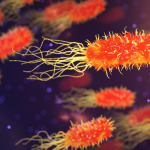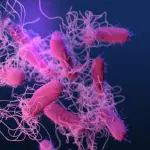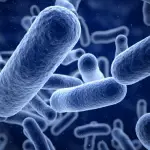Eubacteria, also known as true bacteria, are a diverse group of microorganisms that have evolved over billions of years. They are among the most ancient forms of life on Earth, and they have played a significant role in the evolution of life on this planet.
The evolution of Eubacteria can be traced back to the earliest stages of life on Earth, over 3.5 billion years ago. These microorganisms were among the first to evolve photosynthesis, a process by which they convert sunlight into energy, and they played a crucial role in the development of the Earth’s atmosphere.
Over time, Eubacteria continued to evolve and diversify. They developed a wide range of metabolic processes, such as fermentation, respiration, and nitrogen fixation, which allowed them to adapt to a variety of environments and ecological niches.
Today, Eubacteria are classified into several phyla based on their genetic and biochemical characteristics. The most common phyla include the Actinobacteria, the Proteobacteria, the Firmicutes, and the Cyanobacteria.
The Actinobacteria are a group of Gram-positive bacteria that are found in a wide range of environments, including soil, water, and marine sediments. They are known for their ability to produce antibiotics and other secondary metabolites, and they play an important role in soil fertility and the decomposition of organic matter.
The Proteobacteria are a diverse group of Gram-negative bacteria that include many important human pathogens, such as Escherichia coli and Salmonella. They are also involved in several key processes in the environment, such as nitrogen fixation and bioremediation.
The Firmicutes are a group of Gram-positive bacteria that include many important human pathogens, such as Staphylococcus and Streptococcus. They are also involved in a wide range of processes, such as fermentation and digestion, and they are used in the production of many foods and beverages, such as cheese and wine.
The Cyanobacteria are a group of photosynthetic bacteria that are found in a variety of aquatic and terrestrial environments. They are responsible for a significant portion of the Earth’s oxygen production, and they are used in a variety of biotechnological applications, such as biofuels and bioplastics.
The classification of Eubacteria continues to evolve as new genetic and biochemical data become available. Advances in technology, such as next-generation sequencing and metagenomics, are allowing scientists to study the diversity and evolution of Eubacteria in unprecedented detail.
In conclusion, Eubacteria are a diverse and ancient group of microorganisms that have played a significant role in the evolution of life on Earth. They have evolved a wide range of metabolic processes and adaptations that allow them to thrive in a variety of environments, and they continue to be the subject of ongoing research and discovery. The study of the evolution and classification of Eubacteria is an important area of research with the potential to improve our understanding of the diversity and complexity of life on this planet.











Leave a Reply